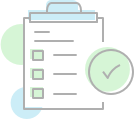
When I first started out as a self-employed designer I figured my ideal client was anyone who needed any type of design service. After all, why limit myself? Need a new logo? I’ve got you covered. Need a t-shirt design? No problem. Need a new interface for your web app? Bring it on. Need someone to typeset your book? I can do it! I really could do all those things pretty dang well, so I figured I’d cast a wide net in order to avoid missing out on any opportunities. But that approach backfired for two reasons:
- With such a wide range of work it was very difficult for me to establish consistent processes that would help me streamline my business. Rather than the momentum of one project fueling the next, each project felt like I was starting over from scratch.
- Clients are often willing to pay a premium for the services of an expert. But I was finding it difficult to market myself as an expert of anything at all when I touted I could do everything under the sun.
What's a Niche?
I’m not going to tell you it’s impossible to be successful if you market yourself as a generalist in your field. Many businesses seem to be pulling it off. But I’d like you to consider some unique benefits when focusing on a niche market and positioning your service offerings accordingly.
First of all, what is a niche market? A niche market is a small, targeted part of a larger market. For example, let’s say Jill just started her own design business. She has the skills and talent to provide her clients with just about any design service, including print design, branding, web design, etc. We could define her larger market as “design” in general. But if Jill wants to focus on a niche market she’ll need to narrow down her offerings and target a specific piece of the larger market. Let’s walk through the process with her starting with the broad label of designer:
Designer: This is Jill’s larger market. It’s a wide net, but since Jill is looking to focus on a niche she’ll need to be more specific.
Web Designer: This is a huge step in narrowing down the type of client Jill is targeting. Most designers stop at this level of specificity. But it’s not a niche yet.
E-commerce Designer: Now we’re talking. Jill took some time to determine what aspect of web design she enjoys the most and where she feels she can provide the most value. For her e-commerce design has always been a strength. She’s found her niche. But Jill isn’t done yet.
Shopify Designer: Jill realizes a majority of the e-commerce sites she’s worked on in the past have been Shopify sites. She researches the Shopify ecosystem and determines there’s plenty of opportunities to keep her business busy and profitable. So she decides to take things a step further by targeting a niche within a niche. Meta.
Don't Be Afraid to Niche
Committing yourself to a niche market can be scary. It might feel like you’re excluding a potentially large client base. But from the client’s perspective what you’re really doing is eliminating the amount of competing designers by marketing yourself as the obvious choice for the niche market you’re targeting. For example, if you were a client whose business depended on Shopify, and you had to choose between hiring Jack who markets himself as a general “Web Designer” or Jill who markets herself as a “Shopify Designer” the decision would be easy. Jill also has the advantage of being found easier than Jack. The clients who specifically need Shopify help are more likely to run across Jill who happens to be a big fish in a small pond, than they are Jack who is just one of a zillion fish in the huge web design ocean.
Jill also has the advantage of knowing where her clients frequent online. She helps out in the Shopify forums, advertises her services on Shopify theme sites, and runs very targeted Google Adwords campaigns targeting clients looking for Shopify designers. Jill also starts an email newsletter covering best design practices for e-commerce sites with an emphasis on (you guessed it) Shopify. Over time Jill starts to “own” this corner of the market. When someone needs Shopify design help Jill’s business is one of the first ones that clients think of or find.
Targeting a niche market can also affect how much you’re able to charge for your services. Like I mentioned earlier clients are often willing to pay a premium for the services of an expert. Using Jill as an example, she not only appears to be an expert, but her focus on this niche, and the skills and best practices she’s developed as a result, have indeed made her a genuine expert. The premium price she charges is fair and worth it to her clients. Even if Jack’s fees are less expensive most clients will still choose Jill as they’ll be willing to pay more for her targeted knowledge and expertise.
So if you’re having a difficult time standing out from the crowd, defining your ideal client, or charging a premium for your services, consider targeting a niche market. You’ll be positioning your business to capture clients who already see you as the solution to their problems, and are willing to pay you generously for your expert advice.







